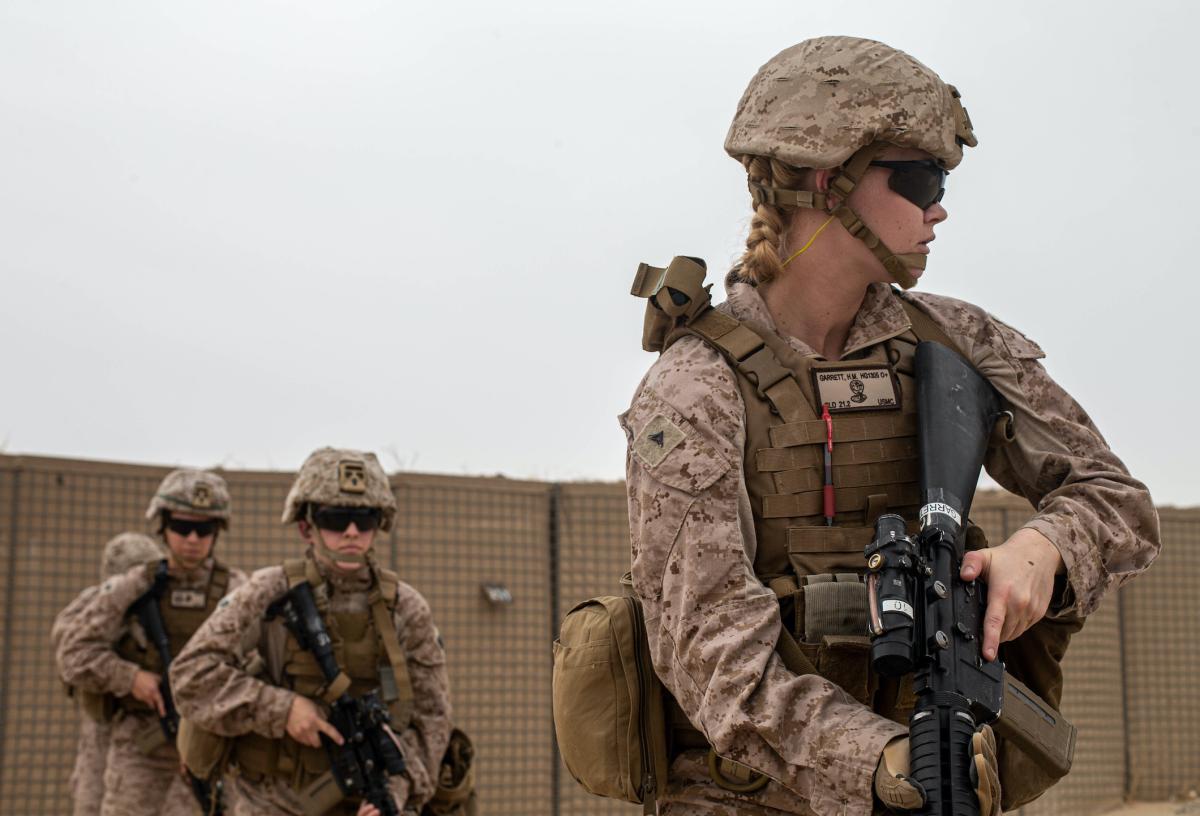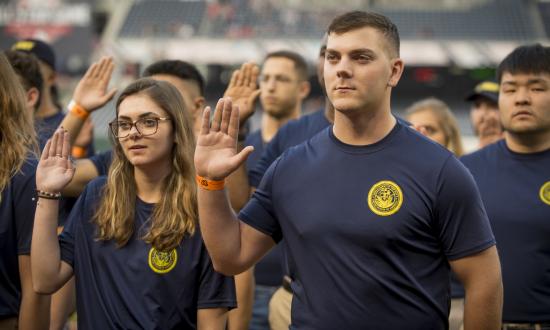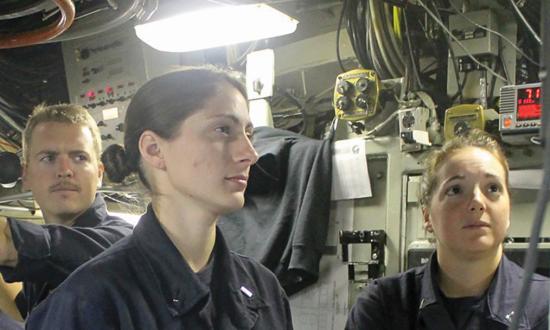In December, the U.S. Navy announced that Captain Amy Bauernschmidt would assume command of the USS Abraham Lincoln (CVN-72), becoming the first female aircraft carrier commanding officer. Through decades of technological innovation, carriers remain crucial guarantors of U.S. security, as do the brave and seasoned men and, now, women who have led them since before World War II. Yet, the importance of the aircraft carrier is not the only vestige of World War II remaining among our armed forces. The military context of the draft in the 1940s—one that mobilized 10 million men and zero women—also persists. Even in 2021, women aged 18 to 25 are not required to register for the Selective Service System, unlike their male counterparts. And should the United States ever need to activate the Selective Service to bolster the armed forces, women would be left behind.
As the U.S. reenters a period of strategic competition against Russia and China, and tensions remain high with Iran and North Korea, the nation must be prepared for a disastrous military confrontation. While that is unlikely, to prevail, the United States may need to activate the Selective Service. In light of this, the draft should be modernized to include women. And, we make this appeal as two young women who would be among those required to register.
Far from a radical proposal, our desire to be included, as women, within the Selective Service System has its roots in the increasingly important role of women in the military. Women have always fought America’s wars, but historically their gender has limited their participation. In 1948, Congress granted women the ability to serve in peacetime forces, but limited their presence to two percent of the military. This discriminatory policy changed in the 1970s but achieved its intended effect of discouraging women from service. In 1980, when President Jimmy Carter made an effort to reactivate the registration requirement of the Selective Service, he recommended Congress permit the registration and conscription of women, but Congress declined.
Women’s toil for equal opportunities to serve and lead in the military has been long—the first female four-star general, General Ann Dunwoody, was only appointed in 2008. Since the end of conscription in 1973, the number of women in the military has risen dramatically, from 1 percent to 16 percent of the armed forces. And in 2015, Secretary of Defense Ash Carter opened all combat roles to women.
Today, women serve in all echelons of our military, from roles in administration to special operations, proving they are just as capable of military sacrifice as their male counterparts. The 1940 law limiting peacetime Selective Service registration to men is outdated and fails to respect the role women have played and continue to play in the U.S. armed forces.
In light of the proven capability of women to serve—and serve well—Congress should include women in the Selective Service system. Not only does including women promote equity within the military—and society more broadly—it strengthens U.S. national security.
Universal service is enshrined in our democracy. President George Washington noted, “it may be laid down as a primary position, and the basis of our system, that every citizen who enjoys the protection of a free government, owes not only a proportion of his property, but even of his personal services, to the defense of it.” As the United States strives toward a more egalitarian society, it is imperative that we make continued efforts to achieve a more egalitarian and representative whole-of-government, including within the default character of the national defense establishment.
Though benefiting from the national defense assurances of the Selective Service, women are not equally expected to bear the burdens of that defense in times of national emergency. Should the Selective Service ever be used to mobilize personnel for a conflict, it is only fair, just, and true to the nation’s democratic core that women and men be equally called on to serve. Moreover, that all citizens have vested interest in collective sacrifice has the potential to enhance public accountability and engagement on matters of international security and foreign affairs.
Including women within the Selective Service transcends equity and rests on practicality. A future conflict against any peer or near-peer power promises to be devastating and complex. To compete, the United States will need to marshal all its resources. Currently, the United States limits itself to potentially drafting the 17 million men registered for the Selective Service, instead of from a pool of 34 million young Americans. Requiring women to register for the Selective Service instantly doubles the pool of eligible draftees. When only 30 percent of young people are eligible to serve in the military by fitness, education, and legal standards, doubling the available human capital drastically improves war-time mobilization.
Future conflicts will likely be fought across multiple domains, including the ground, the sea, cyber, and space. To succeed, the military must be manned by the best, brightest, and most fit citizens. By excluding women from the draft, the nation potentially excludes better qualified candidates. Annually, women outpace men in terms of college graduation. As modern conflicts shift away from hand-to-hand combat and toward cyber and space capabilities, education and specialized skills will become even more valuable.
Including women in the Selective Service will not solve all military readiness issues—others have argued for an immediate return to the draft, growth in STEM education, or a total overhaul of the system—but it is a step in the right direction that can be accomplished quickly via legislation. Including women in the Selective Service would have tangible impacts now by validating and normalizing the role of women in defense, diversifying the national security establishment to the benefit of all Americans.
Building diverse national security teams with greater gender parity will improve the overall quality of decision-making by focusing more on the facts and inspiring innovation. As noted by Rosa Brooks, the co-founder of the Leadership Council for Women in National Security, women tend to be more collaborative leaders and less prone to mistakes of overconfidence. When it comes to national defense, higher quality decisions translate to lives saved.
Through her accomplishments, Captain Bauernschmidt joins a formidable canon of ceiling-shattering women. In applauding her, we also celebrate the dwindling number of military ranks and roles yet to be held by women, and the expanding number of women serving in the upper echelon of the armed forces. For these reasons, it is surprising and unnerving that one of the few remaining barriers to women’s equality in the military can only be broken by an 18-year-old, when she registers for the Selective Service.
As two young women in a country faced by myriad threats, we constantly consider the service yet to come, what was asked of citizens in World War II, and what may one day be asked of U.S. citizens again. When sacrifice is required, the burden should be shared among all citizens, not just the nation’s sons, brothers, and fathers, but its daughters, sisters, and mothers, too. For both the foundations and protection of our democracy, it is past time women are included in the Selective Service. Draft us too, America.





